
Partners Developing Underwater Single Photon Imaging System
.RedWave Labs Ltd - are designing and building the rugged and compact control electronics for the 100 pico-second pulsed laser source.Photon Force Ltd - are developing a next-generation 1D SPAD array sensor and accompanying FPGA for onboard processing targeted at imaging through scattering environments.Heriot-Watt University — are applying their knowledge to the design of the transceiver system and single-photon imaging techniques, building on their extensive research and utilizing their test facilities.University of Edinburgh — are bringing their experience in designing SPADs for 3D imaging
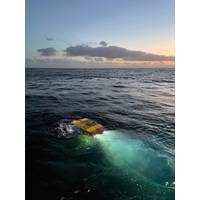
NOC Expedition Seeks Answers on Subsea Mining Impacts
to March 26, 2023 from Costa Rica to the Central Pacific in an area called the Clarion Clipperton Zone (CCZ) at abyssal depths of almost 5,000 meters. SMARTEX is funded by the Natural Environment Research Council (NERC) and its project partners. Natural History Museum, British Geological Survey, Heriot Watt University, JNCC, (Joint Nature Conservation Committee), Liverpool University, SAMS (Scottish Association of Marine Science), University of Plymouth, University of Southampton.Image courtesy NO
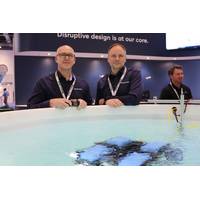
Oceanology ’22 Day 2: New Demands Drive Ocean Innovation
designing a new work all electric work class ROV that will be USV-ready, like SMD’s Atom electric ROV, which got its first customer, Rovco, announced today via a LOI. L3Harris has been working with the University of Exeter through the ARISE project to optimise ROV operations from USVs while Heriot Watt University in Edinburgh has been focusing on building autonomy into ROVs, to make over the horizon operations easier, another conference session heard.Meanwhile, new breeds of vehicles are entering the market through companies that either didn’t even exist at the last Oceanology or were still
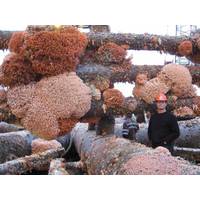
Decommissioning: Corals on Oil Platforms Could Kick-start the Deep-sea Ecosystem
ecosystems. Murray Roberts is Professor of Applied Marine Biology & Ecology in the School of Geosciences at the University of Edinburgh where he moved in October 2016. Before this, he was Professor of Marine Biology and Director of the Centre for Marine Biodiversity & Biotechnology at Heriot-Watt University. He studied Biology at the University of York before a PhD at the University of Glasgow examining nitrogen cycling in the Anemonia viridis symbiosis. Since 1997 his work on cold-water corals and deep-sea biology has taken him to sites off the UK, Norway, Ireland, and the SE United
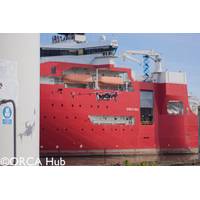
R&D: Robotics Advances Inside the ORCA Hub
Many of the more advanced mechanics of robotic systems are being developed as part of the Offshore Robotics for Certification of Assets (ORCA) Hub in Edinburgh. It’s a publicly funded project led by the Edinburgh Centre for Robotics (Heriot-Watt University and the University of Edinburgh), in collaboration with Imperial College London and the Universities of Oxford and Liverpool. We spoke with some of their specialists.First of all, what is robotics? Does that include remotely operated vehicles and autonomous underwater vehicles, for example?David Lane, Professor of Autonomous Systems Engineering
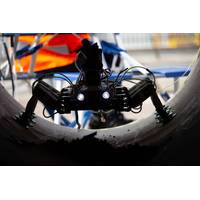
Robotics: Autobots Transform in the Offshore Energy Sector
;s the reliability of vehicles themselves. “For robotics to be fully integrated into commercial practice, barriers relating to their long-term reliability as well as their ability to operate safely with humans in the same environment need to be addressed,” says an OTC 2020 paper from Heriot-Watt University, a member of the ORCA Hub. “The use of BVLOS robotics requires a new methodology in dynamic certification,” it says, so it’s been looking at self-certification, enabling robots to verify their health status and ability to deliver missions.Future visions“In
Ocean Installer Appoints New CEO
complex, high value projects and maintaining and building strong customer relationships in our industry. He shares our vision in continuing the development of Ocean Installer into an international Tier 1 subsea player," Kleveland added.Strømsnes has a degree in offshore engineering from Heriot-Watt University. In addition to his roles in Technip and TIOS, has experience from the renewables industry with REC Solar as Vice President for Projects.Strømsnes starts his new career in Ocean Installer on February 1, 2020 and will divide his time between the company’s headquarters
ORCA Hub Readies Drones for Offshore Energy
A consortium of five universities, including Heriot-Watt University, working with 35 industrial and innovation partners, has unveiled the latest results from its research collaboration.The largest academic center in the world for research into robotics technology for offshore energy infrastructure, the ORCA Hub’s aim is to advance robotics and Artificial Intelligence technologies for the inspection, repair, maintenance and certification of offshore energy platforms and assets.Creating solutions to some of the most challenging, hard to reach and hazardous real-world problems in the energy sector
ROVOP Joins ORCA Hub
ROVOP, the global subsea robotics specialist, is the latest company to join the ORCA (Offshore Robotics for Certification of Assets) Hub offshore robotics, artificial intelligence and autonomous systems development program. The ORCA Hub is a consortium of five universities – Heriot-Watt University, University of Edinburgh, University of Liverpool, University of Oxford and Imperial College London – that are working together to develop highly specialized robotics and AI technologies for the inspection, repair, maintenance and certification of offshore energy platforms and assets.The



 February 2024
February 2024





